In India: The land of Snakes and Serpents II, I ended on the note of how snakes had played a key role in our Epics – the Ramayana and the Mahabharata. (If you haven’t read Part I and Part II of the Series, you can click on the links to go back.)
I told you in Part II that the world’s longest Epic – the Mahabharata, actually began with snakes and that I’d be covering that in Part III . So here’s the story.
The World’s Longest Epic
Most people imagine that the Mahabharata is a sequential story running in a chronological pattern starting with the ancestors of the Pandavas and Kauravas and going on in a linear fashion. This couldn’t be further from the truth.
I have tried reading the English translation of the critical edition of the Mahabharata and it is anything but linear and straightforward. The story goes back and forth repeatedly, takes time-jumps, goes into several flashbacks, delves into parallel narratives, introduces even minor characters in great detail, side-tracks again and again into stories of other people. It’s very hard to keep track of what’s going on.
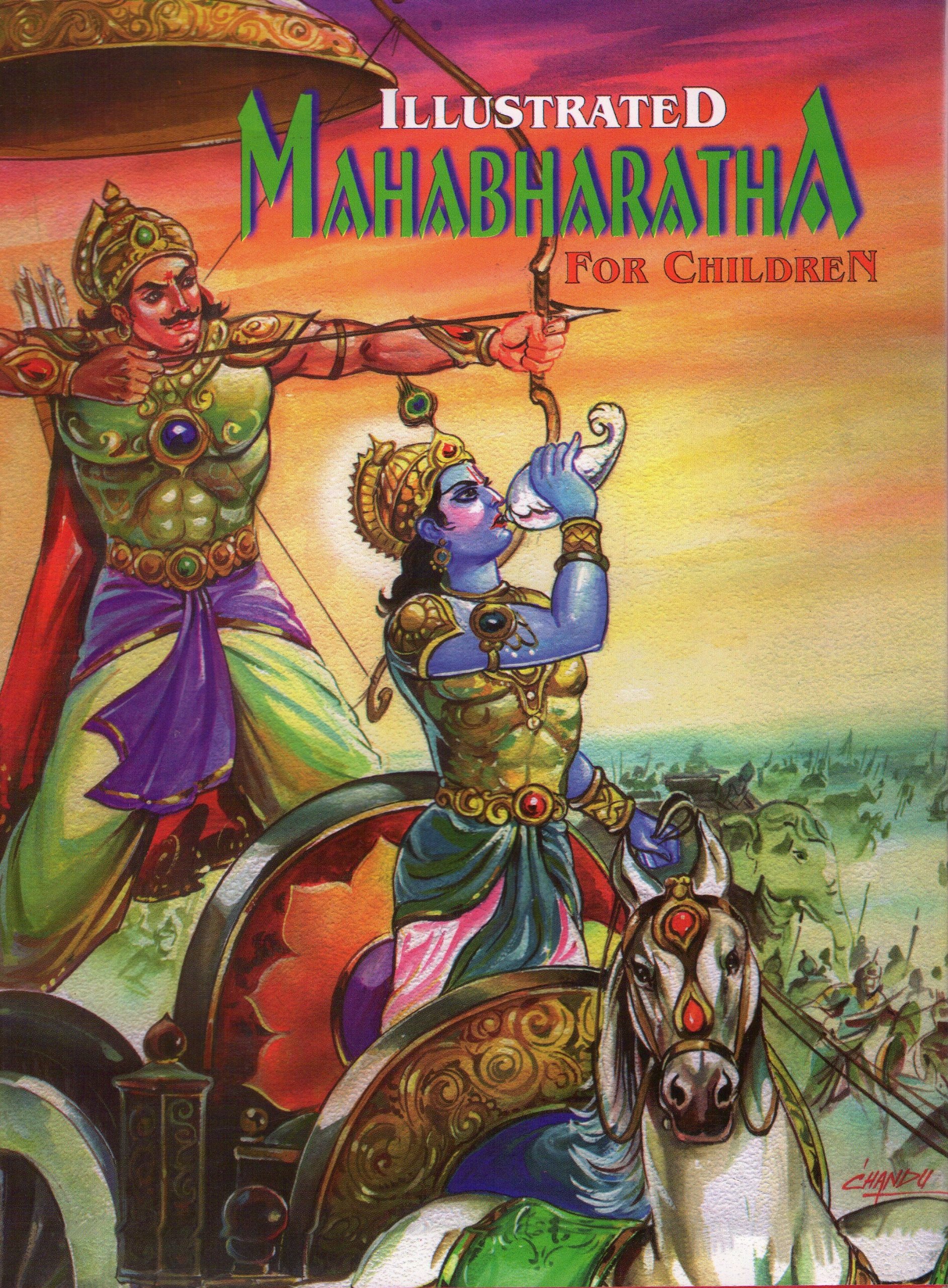
Amongst the many things one discovers when one sits down to read the Mahabharata as it is, is that the great epic begins with a snake sacrifice.
Yes, you heard right. The great snake sacrifice! Here’s the story. And staying with its dramatic pattern – the Mahabharata, like the Ramayana – begins at the end. And the entire tale is then told as a narration of the past.
Yes… Bollywood isn’t quite the master of the flashback mode. It’s been tried and tested in India since time immemorial!
Mahabharata begins with the Snake Sacrifice
A great Sarpa Yagnya is going on in Hastinapur.
King Janamejaya, furious with the Nagas, has decided to avenge the death of his father (King Parikshit – grandson of Arjuna), who was killed a week ago by snake bite. “I will kill all the snakes of the world!” he decides and vows to perform a Sarpa Sattra, a sacrifice with which he can destroy all snakes.

A large assembly gathers in the city for the sacrifice. Hundreds of priests sit around a grand fire chanting mantras to invoke the necessary forces that would draw the snakes out of their homes towards the fire. Thousands of snakes are massacred. Nobody dares raise a voice against the King.
In the midst of this massacre, a lone voice cries out “Oh King! You must stop killing snakes! What you’re doing is wrong!” The voice belongs to a young sage named Askita.
“How dare you? My father caused snakes no harm!” replies Janamejaya. “But Takshaka, the King of Snakes killed him. I shall not rest till I have wiped out all the snakes of the Earth!”
“Do sit down and listen,” says Astika, “and I will tell you why your father was killed by a snake.”
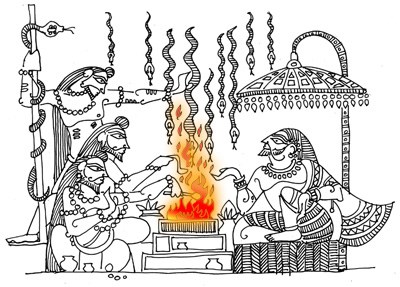
King Janamejaya calms down and agrees to listen. And thus the tale of his ancestors is recounted to him by Askita.
“Your father Parikshit ruled over Hastinapur and was a just and kind king. But a week before his death, King Parikshit went hunting in the jungle.
“After many hours, he stumbled upon the ashram of Sage Shamik in the forest. Parikshit was thirsty and tired. He asked for water. The sage was meditating and did not respond. Angry that the sage had not responded to his request for water, Parikshit picked up a dead snake that was lying in the corner and flung it in a fit of rage at the sage.
“When the sage’s son, Shringi returned home later, he found his father meditating with a dead serpent around his neck. Furious, he pronounced a curse. “Whoever has insulted my father thus, shall die of snake bite within the next seven days!”
“His father Rishi Shamik opened his eyes with a start. And regretted what his son had done. But it was too late. The curse could not be taken back. But the rishi wanted to do what he could to make amends.
“When he found out that it was the good King Parikshit who had been cursed by his son, he sent word to him to inform him of his impending fate.
“The King was deeply regretful but realised his time had come. He spent his last days, handing over charge of his kingdom to capable hands and donating to worthy causes.
“The ministers however were not willing to accept the fate that would befall the King. They constructed a house with tall walls and pillars and had it surrounded by guards. Giving in to their request, the King remained indoors in the house built specially for that purpose.
“Despite all the measures taken, the curse took effect. On the 7th day, the King was sent a basket of fruits. When the King cut open one of the fruits to eat, a small worm emerged from within. The worm instantly turned into a large serpent and bit the King, killing him immediately.
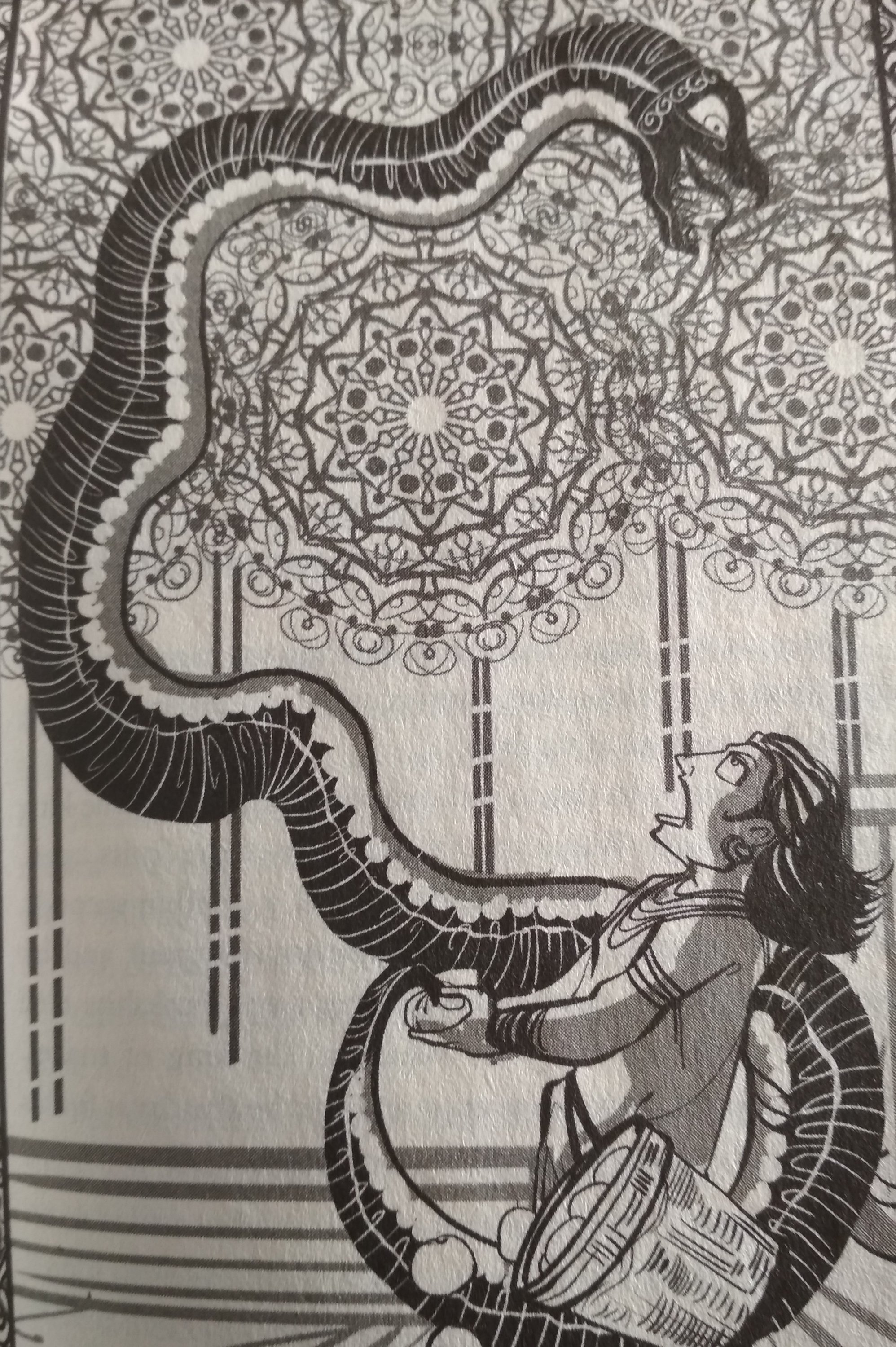
“The serpent was Takshaka, the King of snakes, who had taken a vow of revenge against the Pandavas.
This is the story narrated by Askita to Janamejaya, requesting him to stop the snake sacrifice.
“But why? Why did Takshaka, King of the snakes wanted to take revenge on the Pandavas?” asks Janamejaya.
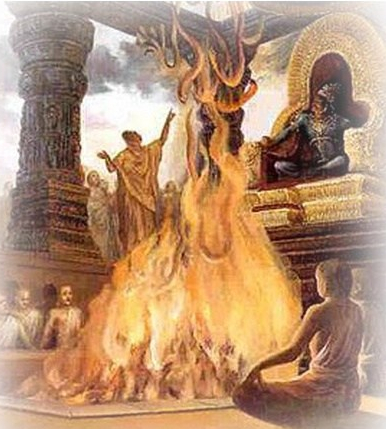
“I will tell you,” responds Askita, settling down for yet another story. “Many years ago, your great-grandfather Arjuna, burnt a huge forest called Khandava prastha in order to clear land for creating a new city. He mercilessly burnt down the entire forest, without paying heed to the many creatures who lived there. That left many snakes including Takshaka homeless. It was then that Takshaka took a vow to avenge the death and destruction of his home and his fellow creatures.”
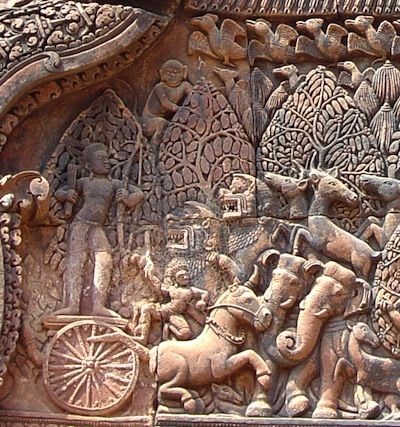
And thus goes on the pattern of questions and answers, more questions and more answers – as slowly and steadily, the entire story of the Mahabharata is told.
So you see, the world’s longest epic, the Mahabharata, begins with snakes and also a very poignant message. No matter how high kings and princes were, a humble snake too had its place. Destroying a forest to build a city would have its own repercussions. What goes around will come around!
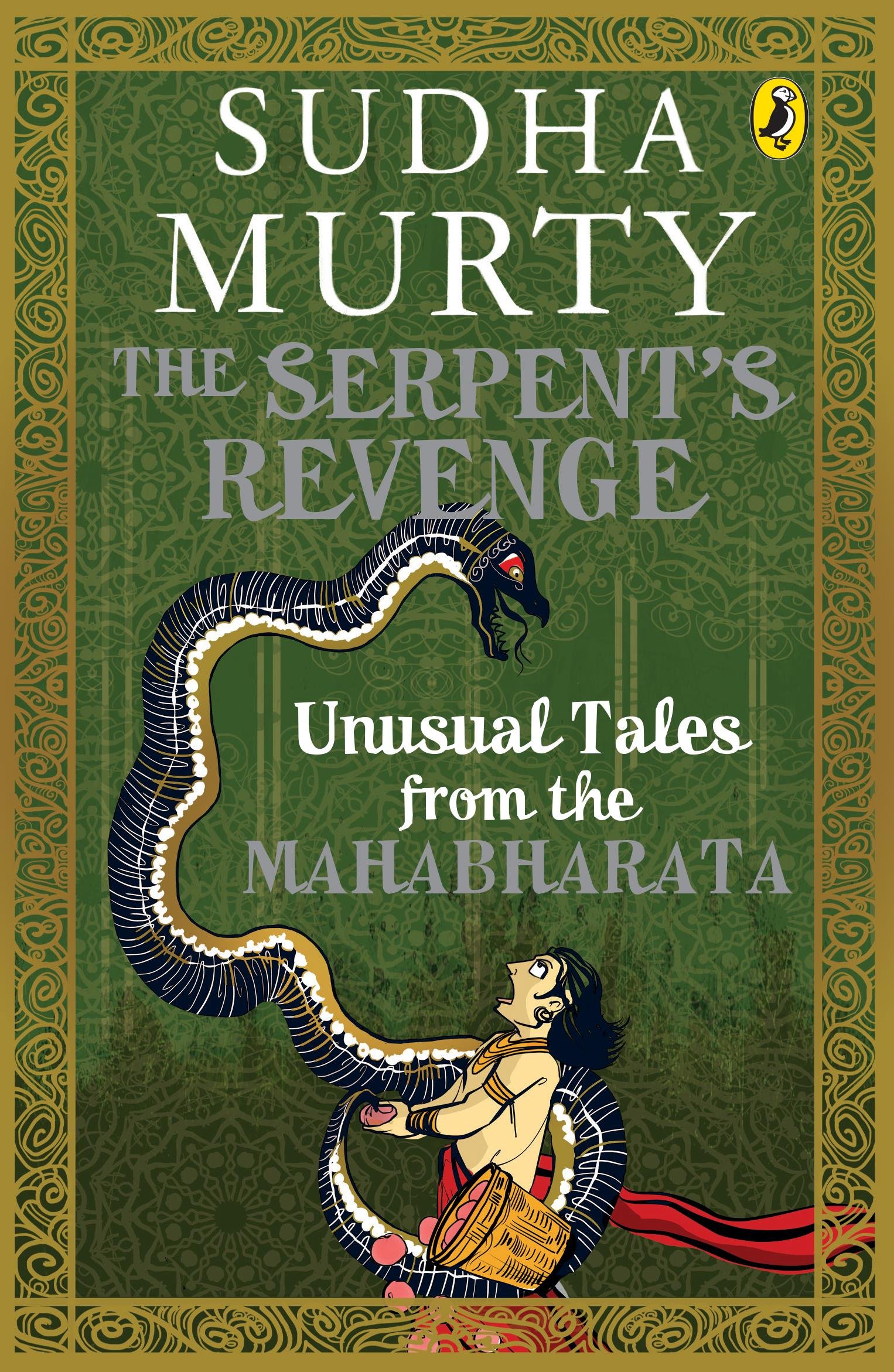
This of course is not the only story of serpents in the Epics.
We also have the story of Bhima being rescued by snakes when he was poisoned. The venomous snakes in the pond act as an antidote to his poison and he is saved. Elsewhere, in another episode, Ulipi, the Naga princess meets and marries Arjuna. Together they have a son Aravan/Iravan who sacrifices himself for the Pandavas in the Kurukshetra war.

In the Ramayana, we have the story of Surasa, a sea serpent who tests Hanuman when he is crossing the seas to Lanka.
Our Epics are full of fascinating stories and snippets, not just with human characters – but with all kinds of creatures – imaginary and real. But we know very little about them. Sudha Murthy’s Book Unusual Tales from the Mahabharata is a wonderful read to discover some of these lesser- known stories. And Devdutt Patnaik’s Pashu is another book that introduces children to creatures of all kinds in our mythology. I’ll be offering a peek into both these book in the posts to follow. Stay tuned!


Ramanjit Garewal
February 18, 2019 - 11:56 am ·Dear Mallika…?
Beautiful…
With so many snakes around…
You made me look around…
For ladders to stay off the ground…
Hissingly looking forward to another episode of the Serpent…
Who will make the high and mighty repent…
Hugs…
Love…
?